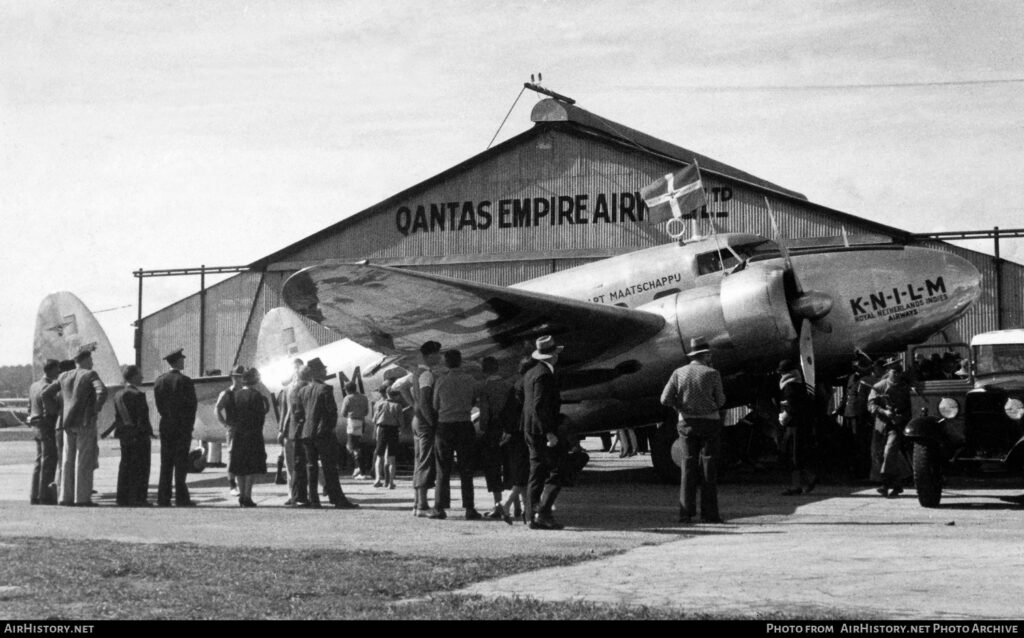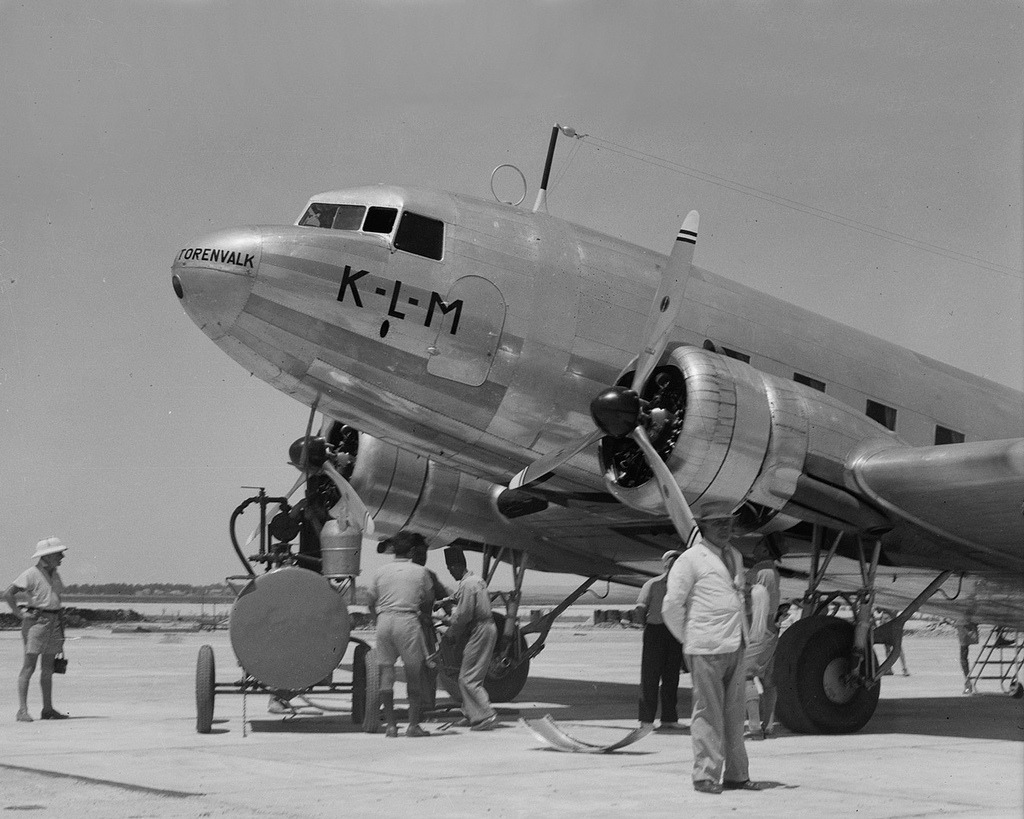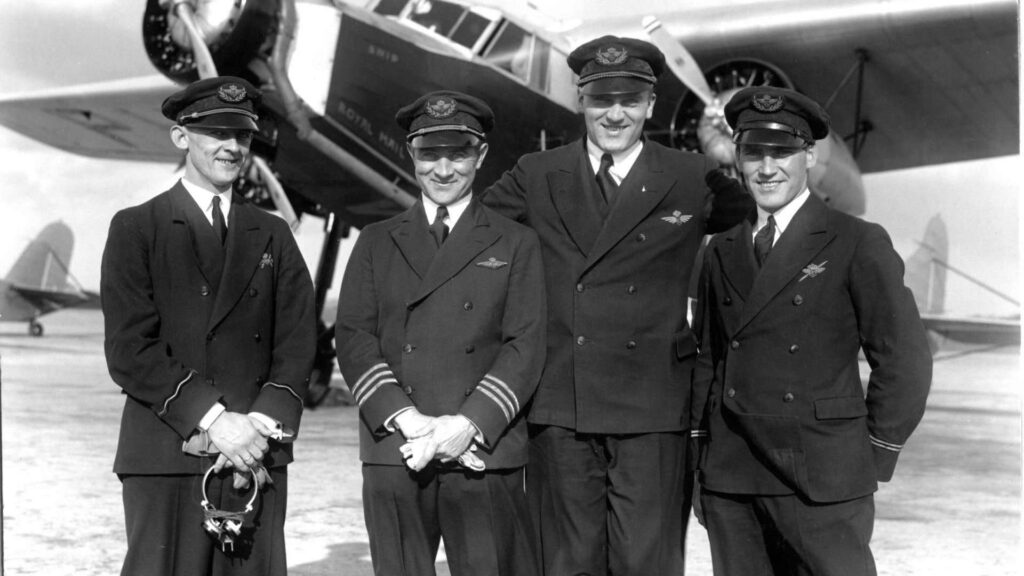The following is a translation of a story recorded in the book: “De KNILM vloog door..“ (The Royal Netherlands Indies Airways continued to fly)

On Thursday, March 26, 1942, a Lockheed Super Electra SE-14 PK-AFM operated by KNILM (Royal Netherlands Indies Airways) failed to arrive at its destination of Batchelor airfield in the Northern Territory. The aircraft, captained by KLM pilot Pieter Badings, had departed Dalywaters, approximately 400 kilometres from Batchelor. The typical Brisbane-Batchelor route involved 12 hours of flight time and multiple refuelling stops. The plane had crash-landed on trees following fuel exhaustion.
With the Australian Air Force’s initial search yielding no results, KNILM dispatched their own DC-3 aircraft, the Torenvalk (Kestrel) PH -ALT from Mascot Airport, Sydney , to continue the mission. Arriving the following evening, the Torenvalk’s crew consisted of Captain Jan van Balkom, mechanic Jaap Boon, and radio operator Buytendijk.
The next day, the DC-3 took flight from Dalywaters and commenced a systematic search of the area. On Sunday, March 29, Captain Gerrit Jan Schipper, aboard a separate aircraft en route from Batchelor to Brisbane, joined the search effort. Unfortunately, no sign of the missing plane was found.

Monday morning dawned. The Torenvalk taxied to the runway, ready for its sixth search attempt from Dalywaters. Its crew had spent nearly 15 hours in flight and on standby. Hope for a successful rescue, however, seemed slim – until a red signal flare arced across the sky. The Lockheed had been located! Two RAAF aircraft, responding to smoke signals, had spotted the missing plane near a river close to Katherine, roughly 250 kilometres southeast of Darwin. Survivors had been confirmed! Their location was marked by “No. 5 Bore,” a numbered cattle watering pump. Instructions were clear: fly due east from the bore for approximately 35 miles to reach the wreckage.
Van Balkom acted quickly. Boon removed the DC-3’s emergency hatches for dropping supplies. Drinking water was carefully secured in cushioned, soldered cans. Boon and Buytendijk, with foresight, gathered pebbles and strips of mosquito netting for message drops. The relief mission was underway. The Torenvalk roared across the desolate Northern Territory towards the Lockheed’s reported location – Katherine, No.5 Bore, then due east. Three pairs of eyes scoured the landscape, but there was no sign of Badings or the wreckage. Time stretched on; optimism in the cockpit waned. Suddenly, a glint of metal amidst the trees! As they circled closer, the barely visible remains of the AFM came into view. Tiny figures below waved with relief.

After dropping supplies and drinking water, Boon and Buytendijk started communicating via their improvised message system. Van Balkom established a code to transmit questions and instructions to the survivors. The main message: “Stay near the wreck until we get help.” Help would come from Katherine, where the Torenvalk landed that afternoon. The local sheriff organised a rescue party, setting out in a three-ton truck to traverse the dry bed of the Katherine River. The journey was expected to take eight to ten hours, but delays stretched it far longer. A second truck was dispatched from Katherine as well. Meanwhile, Van Balkom, with shuttle flights from a field near Katherine, kept the stranded crew informed, providing them with necessities. On Tuesday, March 31, the Torenvalk flew multiple supply missions. The next day, both trucks, guided at times by the DC-3, finally reached the wreckage of the AFM. The ordeal was over; the men had spent six days and nights at the crash site. Despite their hardship, their spirits remained high. As a final message to Van Balkom and his crew, they signaled with mosquito netting strips on the tail of the crashed Lockheed: “Hotel du Bush”.


